In my other page about the beginnings of passenger rail services... anywhere... I tried to get you to see how remarkable it is that we even have trains. And I showed you an very early document relating to the Great Western Railway, and its Bristol / London line.
In 1834 Isambard Kingdom Brunel was 28 years old [1].
But he'd already been dreaming and scheming to create a rail line between Bristol... then an important port... and London. Dreaming is the easy bit. I do it all the time. Isambard Kingdom Brunel went further. He Made Things Happen.
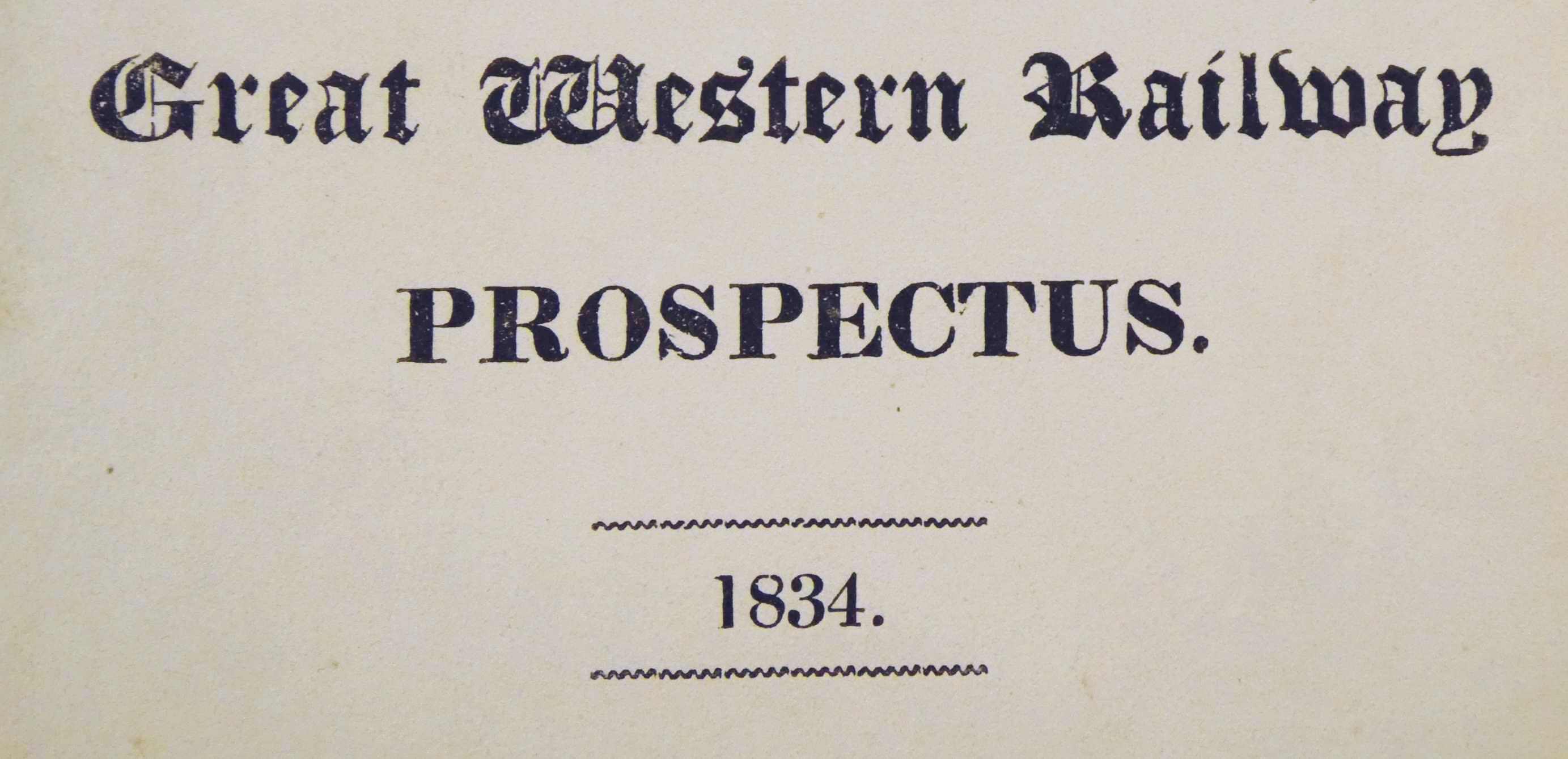
This web page is about an early Great Western Railway prospectus and map.
("Prospectus": An invitation to anyone with money. They are being invited to invest in some venture. The prospectus attempts to persuade them with facts, figures and promises.)

At the time of the prospectus discussed here, the company existed, and Brunel had been appointed its engineer... but the vital enabling Act of Parliament was still a year off.
And dreaming of a rail line between Bristol and London was easy. Building it would be a huge challenge. Not least as it would be the second inter-city passenger-carrying railway in the history of the world.
And yet, Brunel did it. We still use many bits of what he built in the early 1800s today.
So... the little piece of paper this web page discusses is at the heart of something huge. (Some of the images have had minor repairs with photo manipulation software.)
The prospectus / map is 44 x 56 cm. The map covers one side and the prospectus fills the other.
Below here: the whole of the "map" side. A better image of the central part follows, and there's at least on more close up at the page I did about an early map of the beginnings of the GWR.
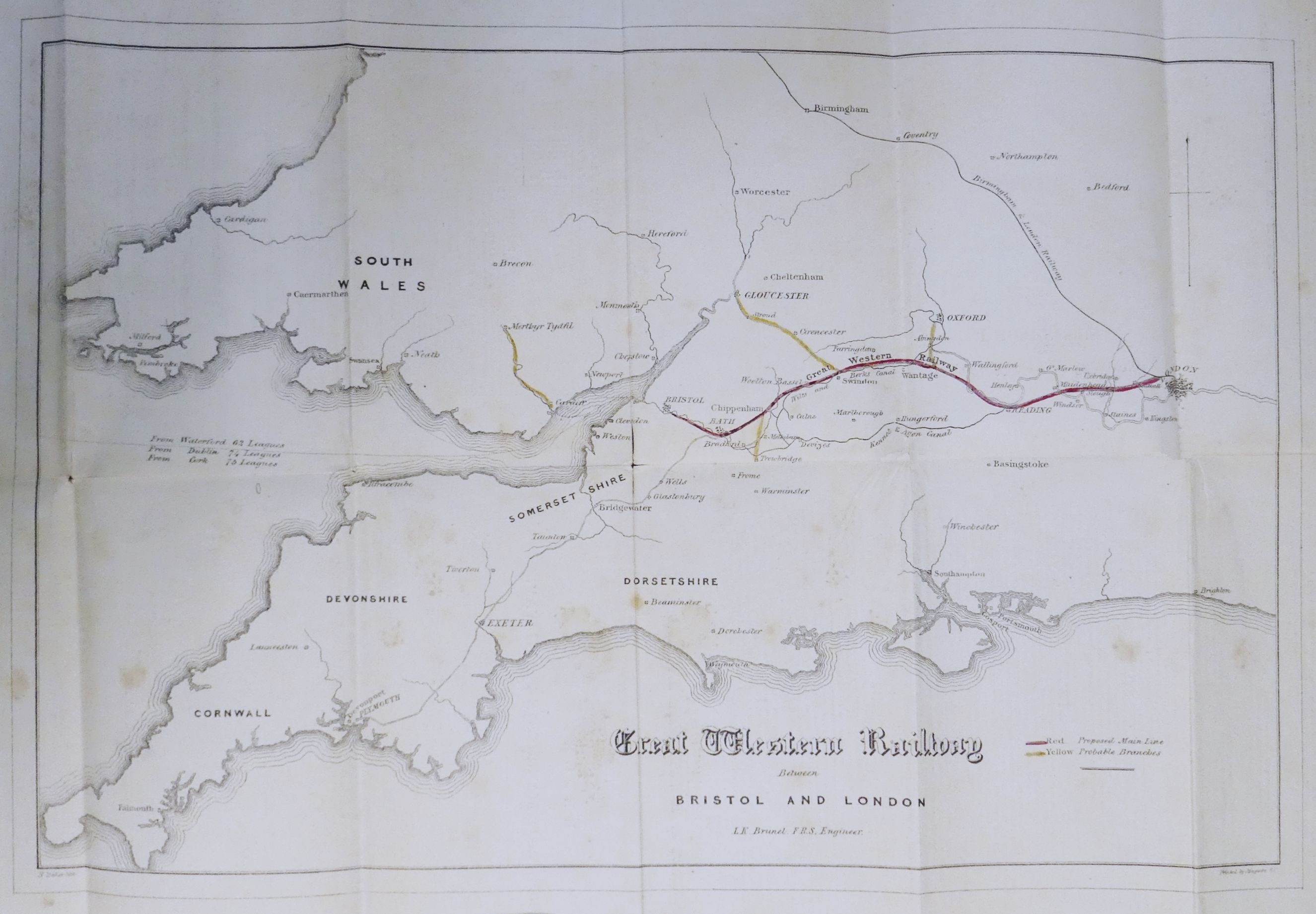
As promised... the central part...
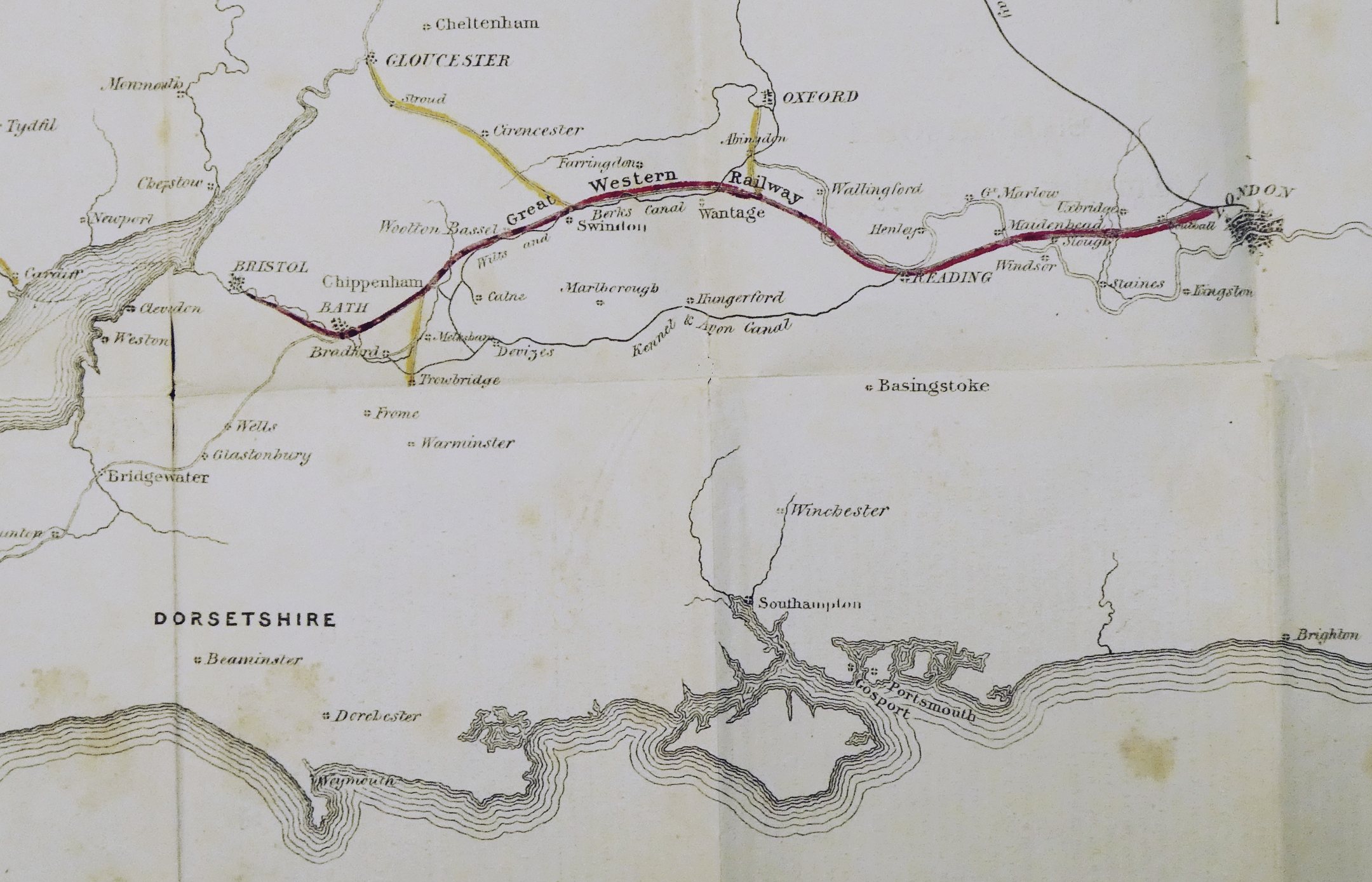
(Don't forget my page about the earlier version of this map.)
The prospectus deserves a page of its own... but I only have so many hours in a day, and I've spent them on the bit that I suspect will delight the most readers- the map.
The whole of the "prospectus" side is shown below. In a moment, I will give you a summary of the sections...
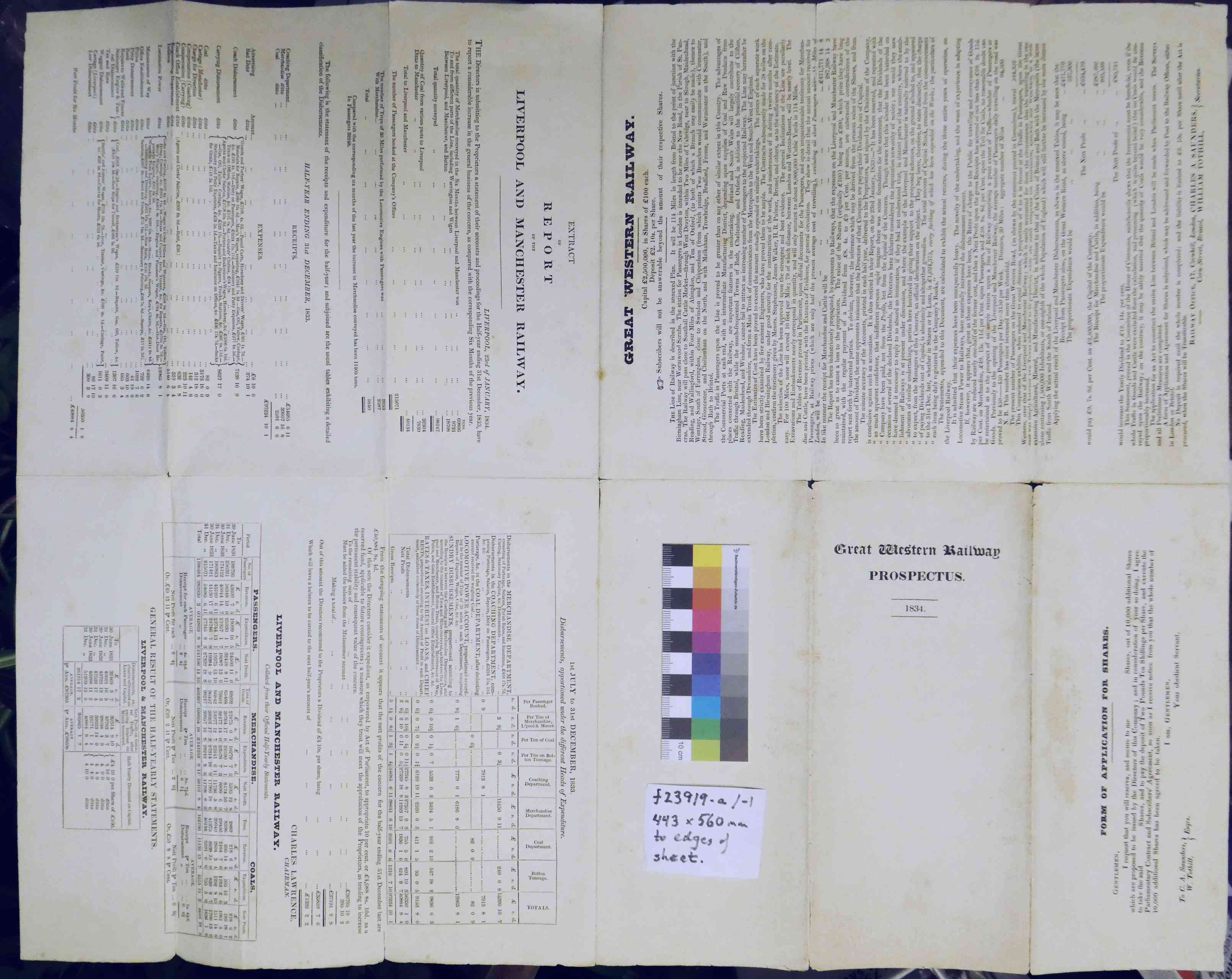
... but first, as a nearly random example of what is in the prospectus, here's a snippet from it.
At the time, there was only one inter-city passenger-carrying railway in the world. You might say that they were being "invented"! The existing railway was the one between Liverpool and Manchester.
In the prospectus which was seeking investment so that the GWR could be build, the GWR directors published the table below, in the hopes of persuading investors that the venture could make a great deal of money.
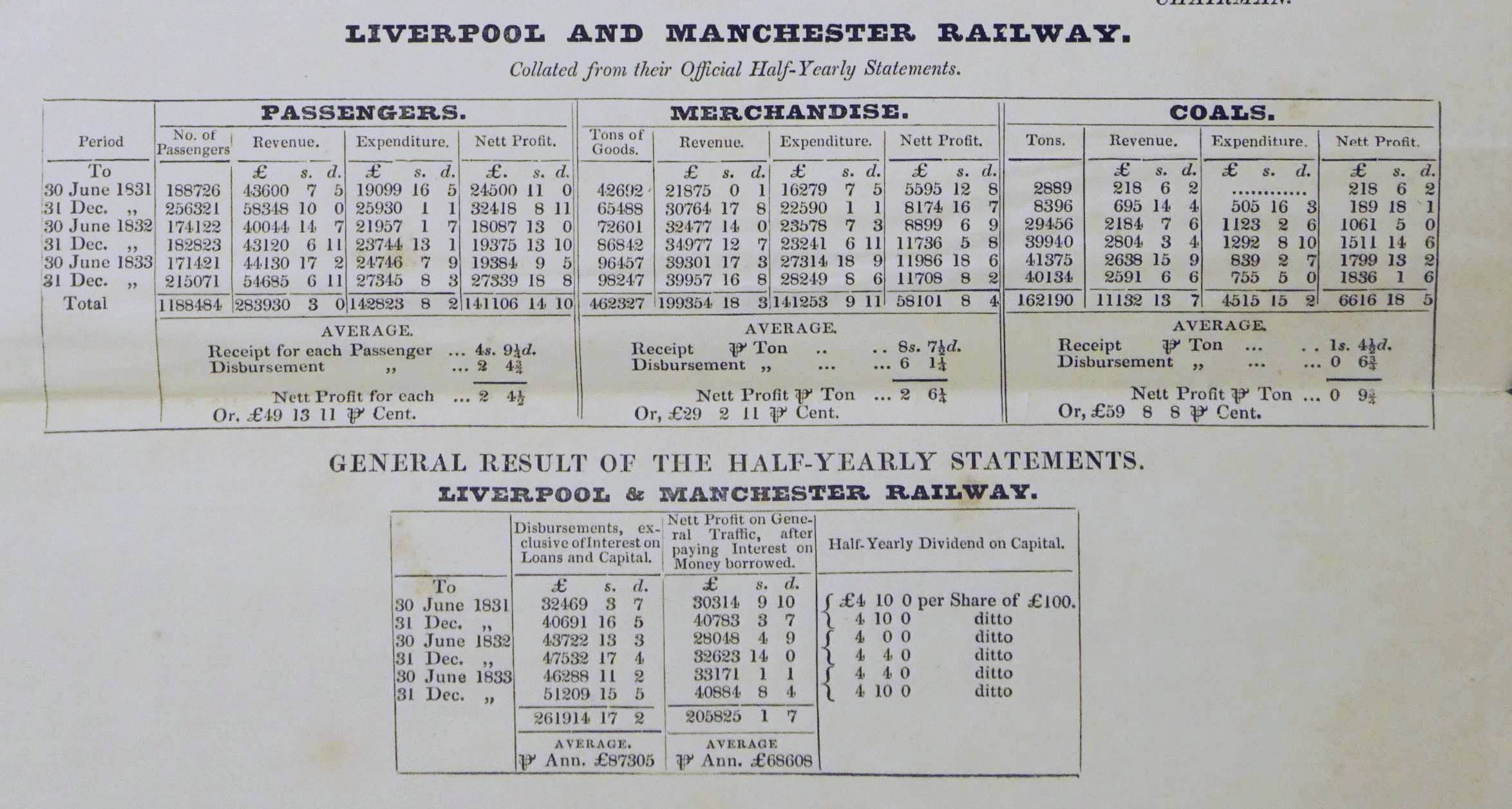
Here's a bit of that in more detail, in case it is easier to read like this. The columns show the figures for the passengers carried, the merchandise carried, and the coals carried. The tradeoffs interest me: The coal costs the railway little to carry... but they aren't paid much for carrying it. About half of what passengers pay is left as profit after costs, whereas the profit margin on the merchandise is smaller.

Going back to the larger image, can you see the number of passengers claimed per half year for the Liverpool and Manchester line? It works out to about 1,000 per day. Hmmm. Am I missing something here? Puzzling. But that's the fun of looking closely at things that have survived out of the past, isn't it?
Returning to the subject of what is on the prospectus side of the document....
Even in the limited image that you have, you can see that a quarter of the page is taken up by some dense text under the heading ""Great Western Railway".
This section tells the reader a bit about what the companies assets are, what its plans are, and addresses some criticisms that apparently were circulating at the time.
Two quarters are given over to a highly detailed report on the Liverpool and Manchester Railway for the half year ended 31 December 1833.
Why present this in a prospectus for the Great Western? The GWR directors want to impress their readers with the idea that a railway can make money.
It gives details of passengers, merchandise and coal carried, some of which is distilled in the table that was shown more clearly above... but the text gives more detail. For example: "Cost: Maintenance of Way: £6425", "Cost: Advertising: £6"
There's a complex table breaking down which areas of the company's operations were responsible for what disbursements, the areas being...
... and...
So... there you have it.
A single document, redolent with a moment in history.
The train was a leap forward from the horse and cart. Is it unreasonable to say that it was a step along the way to cars, etc. And weren't they a step towards aircraft?
"History" isn't all kings and wars. The history of technology, the history of economics affect us all too. Sometimes looking at a detail can bring broad issues into a new perspective.
I hope you've enjoyed this.
===
===
References...
[1] I am indebted to Wikipedia's GWR article, and the one about Isambard Kingdom Brunel, accessed 18 Sep 23, for the accuracy of many of the basic facts in this.
Please get in touch if you discover flaws in this page. Please mention the page's URL. (wywtk.com/boma/gwr/gwr2main.htm).
If you found this of interest, please mention in forums, give it a Facebook "like", Google "Plus", or whatever. If you want more of this stuff, help!? There's not much point in me writing these things, if no one feels they are of any use.
|
Unlike the clever Google search engine, this one merely looks for the words you type, so....
* Spell them properly.
* Don't bother with "How do I get rich?" That will merely return pages with "how", "do", "I"....
Please also note that I have three other sites, and that this search will not include them. They have their own search buttons.
http://www.arunet.co.uk/tkboyd/index2.htm My site at Arunet.
![]() Page has been tested for compliance with INDUSTRY (not MS-only) standards, using the free, publicly accessible validator at validator.w3.org. It passes in some important ways, but still needs work to fully meet HTML 5 expectations..
Page has been tested for compliance with INDUSTRY (not MS-only) standards, using the free, publicly accessible validator at validator.w3.org. It passes in some important ways, but still needs work to fully meet HTML 5 expectations..
....... P a g e . . . E n d s .....